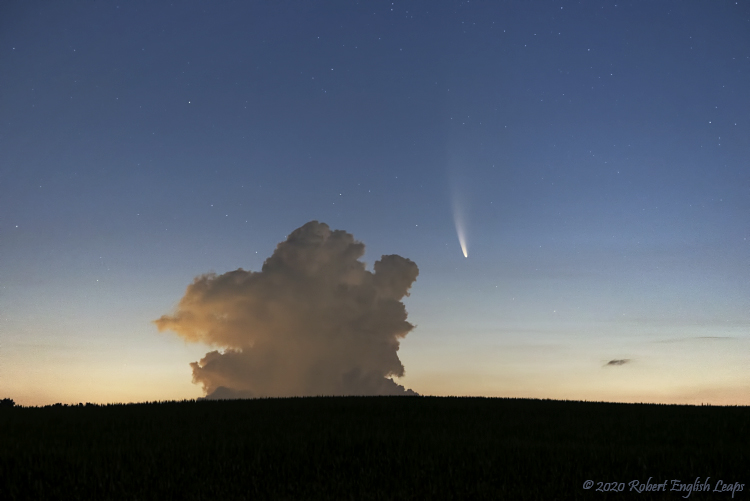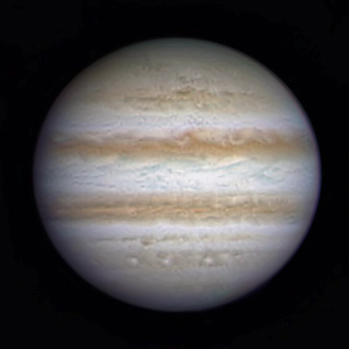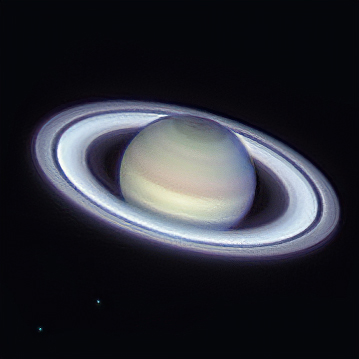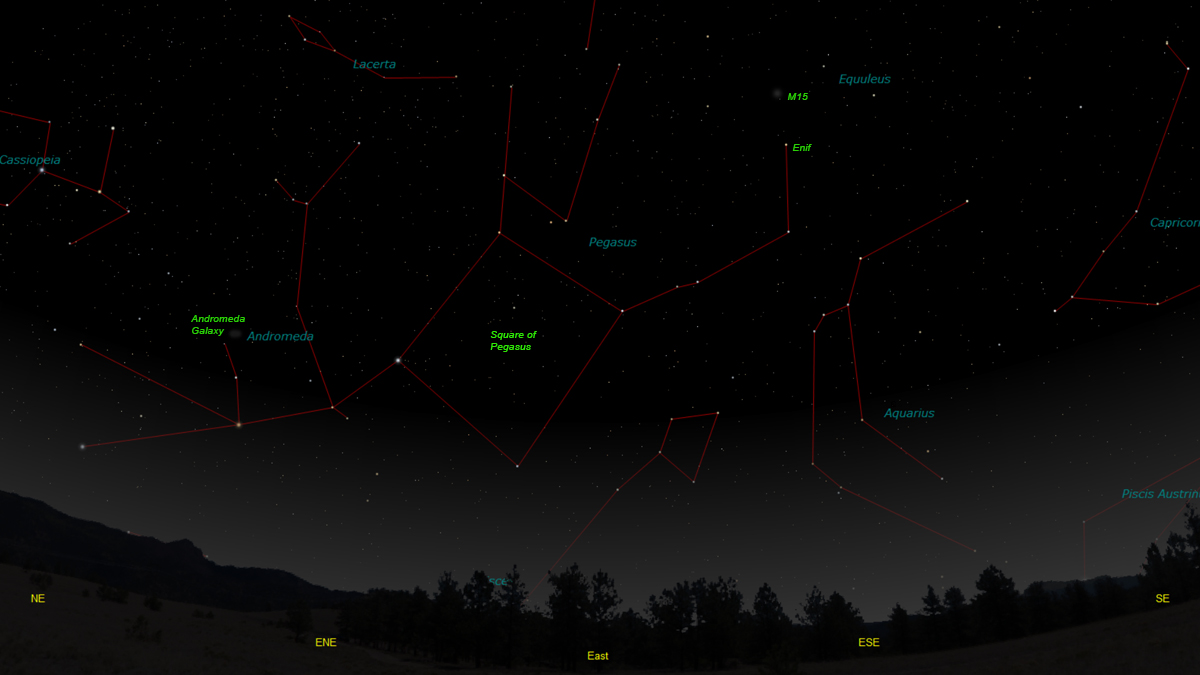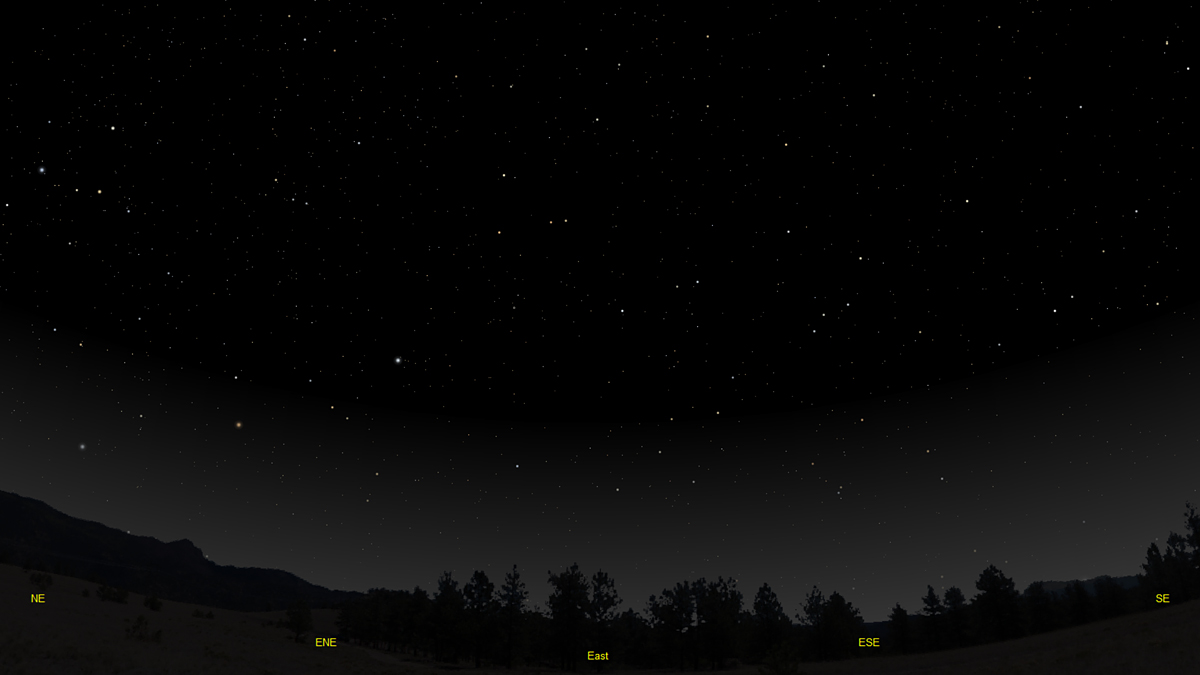The purpose of this feature is to give scout leaders, educators and naturalists an idea of some of the natural events coming up each month. We will try to cover a variety of natural events ranging from sky events to calling periods of amphibians, bird and mammal watching tips, prominent wildflowers and anything else that comes to mind. We will also note prominent constellations appearing over the eastern horizon at mid-evening each month for our area for those who would like to learn the constellations. If you have suggestions for other types of natural information you would like to see added to this calendar, let us know! Note: You can click on the hyperlinks to learn more about some of the featured items. To return to the Calendar, hit the "back" button on your browser, NOT the "back" button on the web page. All charts are available in a "printer friendly" mode, with black stars on a white background. Left clicking on each chart will take you to a printable black and white image. Though we link book references to nationwide sources, we encourage you to support your local book store whenever possible.
Notes From July 2020
But as the comet approached the Sun it brightened much more than expected. By early July it was visible before sunrise to the naked eye and was the brightest comet in over a decade! The northeast horizon was clouded over when I arrived at my observing spot at 4:30am on July 10th. This was my fourth attempt to see the comet. Two of the previous mornings were cloudy and the third had fog. This morning there were thunderstorms in three quadrants of the sky, with lightning and thunder all around. I checked my observatory to make sure it was secure and when I got back to my spot the clouds in the northeast had cleared. The comet was just over the horizon! It was faint to the naked eye, but much brighter in binoculars and in the images. A distant storm can be seen to the left of the comet in the above image. I've seen several bright naked eye comets. The first was Comet Bennett in 1970. I still have the color prints of the comet, made using a home-made clock drive to track the stars. It was twenty-six years till I saw my next really bright comet. In March of 1996 Comet Hyakutake peaked around zero magnitude and sported a tail 80 degrees in length. I still remember the stunning view of the comet against a jet black sky from a cemetery near Toone, Tennessee. Amazingly, the following year Comet Hale-Bopp dazzled everyone again, peaking even brighter than Comet Hyakutake. Comet NEOWISE was the brightest comet for the Northern Hemisphere since Comet Hale-Bopp. Around the second week in July Comet NEOWISE became visible in the evening sky after sunset. The weather continued to be challenging, with some evening clouds just about every day. When the weather allowed, the comet was easily visible from dark locations and stretched all the way across the six degree wide field of view of my binoculars. The ghostly comet above the tree line at the farm was beautiful. It's a quiet kind of beauty. In his book, "The Soul of Night" Chet Raymo says: "This is the language of comets, wordless, night-spoken, dawn-and-dusk-bracketed, a language with a syntax of pale light and a grammar that arches voids, slides along ellipses, gathers force, and blows away in the solar wind, a lover's language of nod and nuance that stretches the circumference of our modern world." In the image below, taken on July 19th, you can see both the golden dust tail and the bluish ion tail, which on the night that I photographed it shone like a spotlight directly away from the Sun. I used my Nikon D750 DSLR and a 105mm lens, mounted on a tracking mount.
On July 30th I tracked the comet down again and found that it had faded considerably, but was still relatively easy to find in binoculars. It will continue to fade as it journeys outward from the Sun. All of the great comets that I've seen have very long orbital periods. Comet NEOWISE will not return for around 6,700 years. Comet Bennett has a 1,678 year period and Comet Hale-Bopp has a 2,533 year period. Comet Hyakutake will not return for 70,000 years! In their book, "Comet", Carl Sagan and Ann Druyan said, "Like a breaching whale before it plunges into the ocean depths, a comet briefly luxuriates in the sunlight and then is gone." Comet NEOWISE will soon be gone as well. But for a few evenings under the stars, all of the stressful events of this year seemed a little farther away, the world a little more peaceful.
Sky Events for August 2020: The Perseid Meteor Shower peaks on the night of August 11-12. Face northeast. The early morning hours should be the best time to observe.
Morning Sky: Venus reaches greatest elongation from the Sun on August 12th. Venus is the brightest star-like object in the eastern sky, so you shouldn't have any problem picking it out.
Evening Sky:
In fact, even a good quality 60mm refractor will give a better view of the ringed planet than Galileo was ever able to see. Saturn was a puzzle to him. In his low-resolution telescope the planet appeared as three separate discs - one large disc with a smaller disc on each side of it. A few years later, he returned to look at the planet when the rings presented edge-on. His two attendant discs had disappeared! He never solved the riddle. He would have loved to see the view available to just about any amateur astronomer today.
Mars rises around three hours after sunset at the beginning of the month in Pisces. As Earth and Mars approach each other, the apparent motion of Mars against the stellar background each evening increases. Its apparent diameter increases from 14.6 seconds of an arc to 18.7 seconds of an arc, enough that details can be seen well in larger telescopes in good seeing conditions. You usually get the best viewing conditions when the planet is due south and at its highest altitude above the horizon. Picking out the subtle details on Mars takes patience. It will reach opposition this year on October 6th.
The views below show the sky looking east at 10:45pm EDT on August 15th. The first view shows the sky with the constellations outlined and names depicted. Star and planet names are in green. Constellation names are in blue. The second view shows the same scene without labels. New constellations this month are Pegasus, the Flying Horse, Andromeda, Princess Andromeda, Triangulum, the Triangle, Pisces, the Fishes, and Aquarius, the Water Bearer. In Pegasus, the reddish star Enif marks the nose of the flying horse. Just above Enif is the globular cluster Messier 15, a nice ball of stars about 33,600 light-years away. The cluster was discovered by Jean Dominique Maraldi on September 7th, 1746. Maraldi was searching for De Chéseaux' Comet at the time. High overhead, in Hercules, another globular cluster is at its best this month. Messier 13 can sometimes be picked out with the naked eye on a dark moonless night. It is about 25,000 light-years distant. In a small telescope it will appear like a little cotton ball of faint light. With increasing aperture, you'll be able to spot some of the faint stars around the periphery of the cluster. Be sure to use averted vision, looking to one side of the cluster, to allow the cluster's light to fall on the light-sensitive rod cells of your eye.
On Learning the
Constellations: Try to learn a few constellations each month, and then following them through the seasons. Once you associate a particular constellation coming over the eastern horizon at a certain time of year, you may start thinking about it like an old friend, looking forward to its arrival each season. The stars in the evening scene above, for instance, will always be in the same place relative to the horizon at the same time and date each August. Of course, the planets do move slowly through the constellations, but with practice you will learn to identify them from their appearance. In particular, learn the brightest stars for they will guide you to the fainter stars. Once you can locate the more prominent constellations, you can "branch out" to other constellations around them. It may take you a little while to get a sense of scale, to translate what you see on the computer screen or what you see on the page of a book to what you see in the sky. Look for patterns, like the stars that make up the "Square of Pegasus."
The earth's rotation causes the constellations to appear to
move across the sky just as the Sun and the Moon appear to do. If you go
outside earlier than the time shown on the charts, the constellations will be
lower to the eastern horizon. If you observe later, they will have climbed
higher. As each season progresses, the earth's motion around the Sun causes the constellations to appear a little farther towards the west each night for any given time of night. If you want to see where the constellations in the above figures will be on September 15th at 10:00pm EDT, you can stay up till midnight on August 15th and get a preview. The westward motion of the constellations is equivalent to two hours per month. Recommended: Sky & Telescope's Pocket Star Atlas is beautiful, compact star atlas. A good book to learn the constellations is Patterns in the Sky, by Hewitt-White. For sky watching tips, an inexpensive good guide is Secrets of Stargazing, by Becky Ramotowski.
A good general reference book on astronomy is the Peterson
Field Guide,
A Field Guide to the Stars and Planets, by Pasachoff. The book retails for around $14.00.
The Virtual Moon Atlas is a terrific way to learn the surface features of the Moon. And it's free software. You can download the Virtual Moon Atlas here. Apps: We really love the Sky Safari 6 Pro. It is available for both iOS and Android operating systems. There are three versions. The Pro is simply the best astronomy app we've ever seen. The description of the Pro version reads, "includes over 100 million stars, 3 million galaxies down to 18th magnitude, and 750,000 solar system objects; including every comet and asteroid ever discovered." A nother great app is the Photographer's Ephemeris. Great for finding sunrise, moonrise, sunset and moonset times and the precise place on the horizon that the event will occur. Invaluable not only for planning photographs, but also nice to plan an outing to watch the full moon rise. Available for both androids and iOS operating systems.
Amphibians:
Recommended: The Frogs and Toads of North America, Lang Elliott, Houghton Mifflin Co. Archives (Remember to use the back button on your browser, NOT the back button on the web page!) Natural Calendar February 2020 Natural Calendar December 2019 Natural Calendar November 2019 Natural Calendar September 2019 Natural Calendar February 2019 Natural Calendar December 2018 Natural Calendar November 2018 Natural Calendar September 2018 Natural Calendar February 2018 Natural Calendar December 2017 Natural Calendar November 2017 Natural Calendar October 2017Natural Calendar September 2017 Natural Calendar February 2017 Natural Calendar December 2016 Natural Calendar November 2016 Natural Calendar September 2016Natural Calendar February 2016 Natural Calendar December 2015 Natural Calendar November 2015 Natural Calendar September 2015 Natural Calendar November 2014 Natural Calendar September 2014 Natural Calendar September 2013 Natural Calendar December 2012 Natural Calendar November 2012 Natural Calendar September 2012 Natural Calendar February 2012 Natural Calendar December 2011 Natural Calendar November 2011 Natural Calendar September 2011 Natural Calendar December 2010 Natural Calendar November 2010 Natural Calendar September 2010 Natural Calendar February 2010 Natural Calendar December 2009 Natural Calendar November 2009 Natural Calendar September 2009 Natural Calendar February 2009 Natural Calendar December 2008 Natural Calendar November 2008 Natural Calendar September 2008 Natural Calendar February 2008 Natural Calendar December 2007 Natural Calendar November 2007 Natural Calendar September 2007 Natural Calendar February 2007 Natural Calendar December 2006 Natural Calendar November 2006 Natural Calendar September 2006 Natural Calendar February 2006
Natural Calendar December 2005
Natural Calendar November 2005
Natural Calendar September 2005
Natural Calendar February 2005
Natural Calendar December 2004
Natural Calendar November 2004
Natural Calendar September 2004
Natural Calendar February 2004
Natural Calendar December 2003
Natural Calendar November 2003 Natural Calendar February 2003 Natural Calendar December 2002 Natural Calendar November 2002 Nature Notes Archives: Nature Notes was a page we published in 2001 and 2002 containing our observations about everything from the northern lights display of November 2001 to frog and salamander egg masses. Night scenes prepared with The Sky Professional from Software Bisque All images and recordings © 2020 Leaps
|
|
